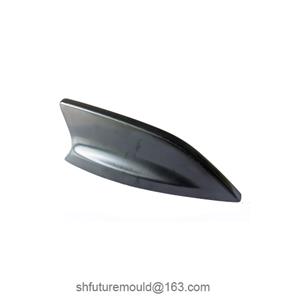Introduction to Overmolding Injection Molds
Overmolding injection molds are essential tools for the overmolding process, primarily used to combine different materials into a composite product through injection molding. These molds are widely applied in automotive, electronics, medical devices, home appliances, and consumer goods industries, fulfilling requirements for anti-slip, shock absorption, sealing, and aesthetic appeal.
1. Definition of Overmolding
Overmolding is an injection molding process that combines a rigid substrate (e.g., plastic or metal) with a soft material (e.g., thermoplastic elastomer or silicone). Using specially designed molds and injection techniques enables physical or chemical bonding between materials to create composite components.
2. Key Features of Overmolding Injection Molds
Multi-Material Molding
Overmolding injection molds allow for the combination of multiple materials, typically used to encapsulate rigid plastics with soft rubber materials.
Structural Complexity
The mold design must account for differences in shrinkage, flow properties, and bonding between materials, making the structure more complex than standard injection molds.
High Precision Requirements
Overmolded products often require precise alignment, demanding molds with high-precision cavities and sliders to ensure product appearance and functionality.
3. Main Types of Overmolding Injection Molds
Single-Cavity Overmolding Molds
Application: Designed for small-batch production and suitable for simple product structures.
Multi-Cavity Overmolding Molds
Application: These molds feature multiple cavities to produce several products simultaneously, improving efficiency and meeting large-scale production needs.
Rotational Molds
Application: Utilize rotary tables or mold rotation mechanisms to complete multi-material over-molding in a single cycle, which is ideal for complex structures.
Insert Injection Molds
Application: Embed soft materials into rigid substrates, commonly used in the production of electronic components and precision parts.
4. Applications of Overmolding Injection Molds
Consumer Electronics
Examples: Phone cases and earphone shells to enhance tactile feel and protection.
Automotive Manufacturing
Examples: Anti-slip mats, shock-absorbing pads, and in-car control buttons for improved aesthetics and durability.
Medical Devices
Examples: Syringes and catheters requiring excellent sealing and softness.
Home Appliances
Examples: Non-slip handles and sealing gaskets for electrical appliances.
Advantages of Overmolding Injection Molds
Improved Product Performance
Enhances product appearance, feel, and functionality.
Reduced Production Costs
Minimizes post-production assembly steps through one-piece molding.




